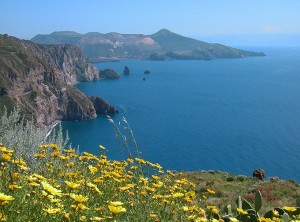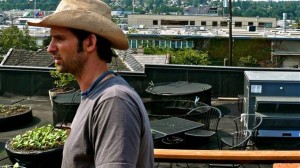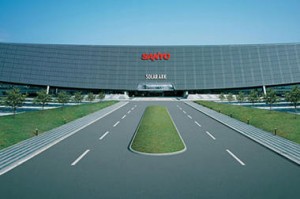 The World Wildlife Federation (WWF), in an effort to promote both greater use of renewable energy and conservation of marine ecosystems, has a 46-foot solar boat (WWF Solar) sailing around the Mediterranean.
The World Wildlife Federation (WWF), in an effort to promote both greater use of renewable energy and conservation of marine ecosystems, has a 46-foot solar boat (WWF Solar) sailing around the Mediterranean.
The solar catamaran is part of WWF Spain’s new ‘Embárcate’ (Get on Board) campaign that is planned along the Mediterranean coastline for the next three summers.
“The WWF Solar is powered completely by the sun. It does not use sails, and it does not use any fossil fuels. It is a boat that causes no polltion – it does not emit any Co2 whatsoever. The Solar shows that we can easily substitute fossil fuels with renewable energy,” said José Luis García Varas, Head of the Marine Program at WWF Spain.
“The WWF Solar and its crew have already docked in the cities of Águilas, Mazarrón, and Cartagena along Spain’s southeastern coast, bringing with them an arsenal of infomation on endangered Mediterranean habitats and species, as well as tips on the sustainable use of resources in some of the last wildlife bastions along the Spanish shoreline,” WWF wrote on Friday.
The WWF Solar will visit Marine Protected Areas (MPAs) such as the Cap de Creus Canyon, home to the greatest density of submarine canyons in the Mediterranian Sea, as well as other important coastal areas in the Mediterranean in the next few years.
The WWF Solar has photovoltaic panels covering its 65m2 roof, allowing the boat to travel at an average speed of 5 knots. It can run for 90 nautical miles straight, essentially two full nights of sailing or around 18 hours, when its batteries are fully charged.
“Renewable energy is an important part of this as is raising awareness that there are many other sustainable practices, such as operating small scale fisheries, that make it possible for people and the environment to thrive,” García Varas said.
The WWF is not new to the seas. In 2007, 5 people traveled from Basel, Switzerland to New York City on this boat to set a Guinness World Record for completing the first motorized crossing of the Atlantic Ocean using only renewable energy. After completing this trip and setting the record, Swiss association Transatlantic 21 (original developers of the boat), donated it to WWF.
Bastille’s Rooftop Garden Raises Urban Farming to New Heights - By Michael van Baker
Colin McCrate, urban farmer
If there’s a vanguard for the back-to-the-future, “Victory Garden” era in horticulture and landscaping, Colin McCrate is leading it. As the recession stretches out, garden-happy Seattleites are switching flowerbeds and shrubs into edible greens, fruits, and vegetables. At McCrate’s Seattle Urban Farm Company, the requests for residential farm landscaping (and chicken coops) keep increasing.
“It’s definitely true,” said McCrate, atop Ballard’s Bastille restaurant (5307 Ballard Ave. N.W.), where he’s installed a prototype rooftop garden. “More and more people are taking advantage of yard space to supplement their food needs. The sale of vegetable seeds has gone through the roof.”
Seattle’s climate, even in a cloud-shrouded summer like the one we are currently experiencing, is perfect for cultivation of greens, herbs, vegetables and fruit, particularly native apples, cherries and plums. Rain and peek-a-boo sun makes for perfect growing conditions. Some local gardeners have always made a sport of growing food products, and Seattle’s P-Patch network has been flourishing since the hippie-intensive 1970s. But now, people are farming for keeps, both residentially and commercially.
“Our customers are constantly surprised at the yield from even a small plot,” McCrate commented.
A few years ago, Bastille’s James Weimann and Demming Maclise purchased a building on the resurgent Ballard Avenue. (If you haven’t been over there recently, make plans. It’s as nice a mix of retail and restaurants in the city). Their goal was to create a restaurant that adhered to the strict demands of French cuisine, namely the use of fresh ingredients. They succeeded in spades, but not before an intensive remodel and some bold thinking. Weimann and Maclise hit on the idea of a rooftop garden. What could be fresher than the harvest from a two-flight walk-up garden?
McCrate, who designed the innovative rooftop beds for Bastille’s produce, estimates that with 800 square feet of garden, the restaurant is currently meeting about 30 to 40 percent of its needs for fresh greens and herbs, including red leaf lettuce, Miner’s lettuce, arugula and peppercress. “They are, however, getting 100 percent of their basil and rosemary needs, which both do very well in Seattle.”
Weimann and Maclise may not see a positive return on their investment for a number of years, but patrons get an immediate, positive return in every bite. And as innovators in the rooftop garden field, they’ve been raking in the media coverage. The garden is “poised to become a Seattle landmark,” said Eat, Drink and Be. Bastille is not the only restaurant or urban enterprise doing a bit of intensive farming. Venerable Canlis has a terraced garden in its North Queen Anne Hill location, and, two years ago, Maggie McKelvy, a manager of HomeStreet Bank’s Ballard branch, led an effort to turn a bed in the bank’s parking lot into a vegetable-producing space.
McCrate believes efforts like these are just the first steps of a widespread movement to reclaim food. It’s hard to argue with him. Just two years ago, separate incidents with contaminated lettuce and cilantro generated a great amount of fear about the safety of our industrial-strength food chain, and the quality of produce like greens, fruits and vegetables that should be served as fresh as possible.
“Producing your own food allows for a measure of security,” said McCrate. “Anyone can plant a vegetable bed or a fruit tree. It takes no more water or soil than a flower bed, looks almost as beautiful in the yard, and produces a tangible and edible benefits.
SANYO SOLAR MUSEUM
Sanyo’s 1,033-foot- wide solar-powered museum in central Japan is composed of thousands of factory-recalled solar cells recycled from the company’s junk piles – a rare fusion of budgetary restraint, ecological awareness, and aesthetic design.
Let the iPhone Save the Planet
______________
Visit Pie Ranch

WHAT’S INSIDE
SUBSCRIBE TO UPDATES HERE
NEW! ECO TRAVEL
INSIGHT –
N THE MIX – webcasts
 TV
TV
NEW: ORGANIC
VIDEO -
NEW! WIND & WAVES
QUESTPOINT GOES MOBILE – Beta
Just log in from your iPhone, Blackberry or mobile device to get the latest stories, audio and video.



